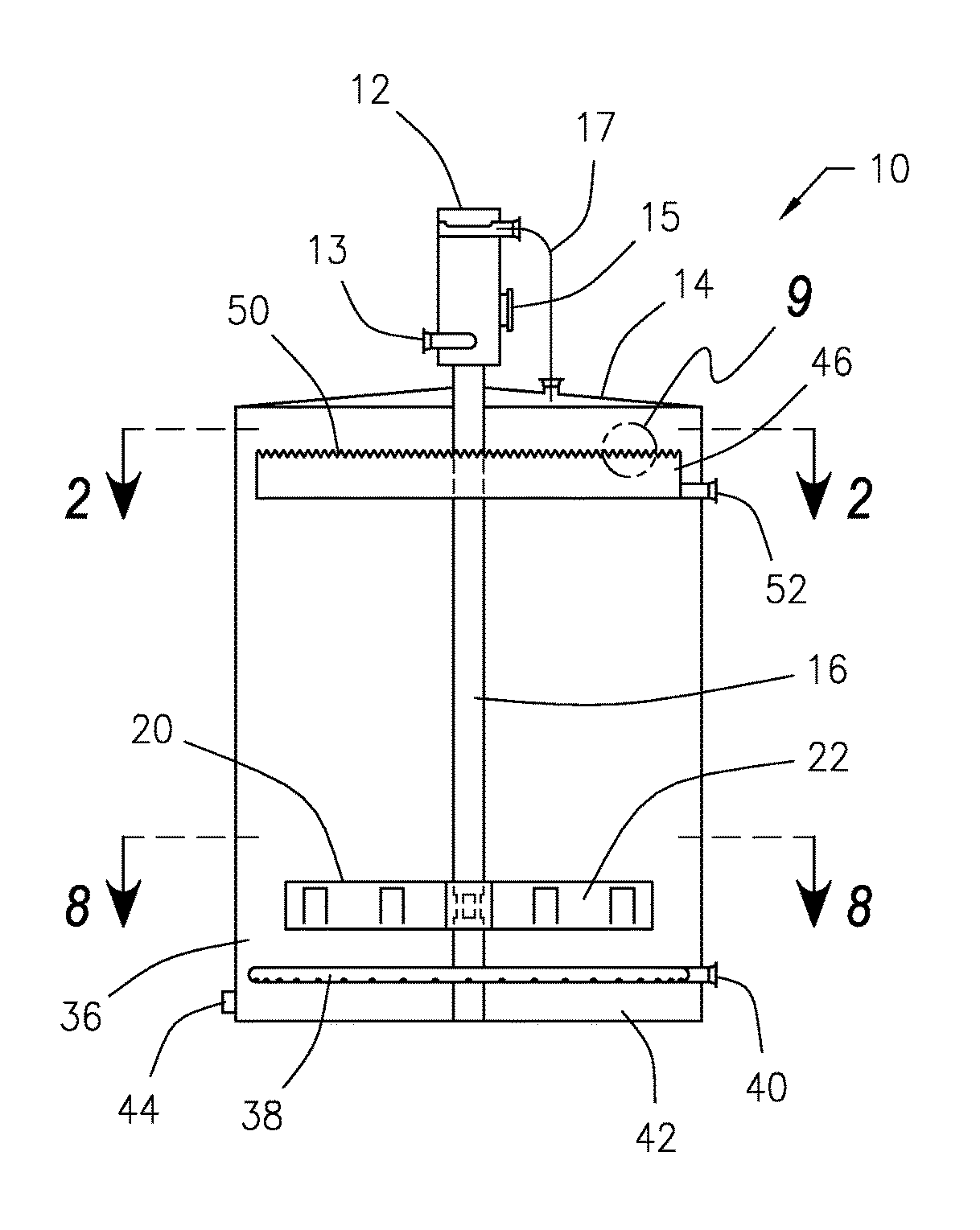High efficiency fluid separation device
a technology of fluid separation and high efficiency, which is applied in the direction of liquid degasification, separation process, chemistry apparatus and processes, etc., can solve the problems of mixing detrimental to the process, the performance of bigger tanks is worse, and the labs were startling and very disappointing, so as to maximize the utilization of the tank, maximize the retention time, and promote the separation of smaller water droplets
- Summary
- Abstract
- Description
- Claims
- Application Information
AI Technical Summary
Benefits of technology
Problems solved by technology
Method used
Image
Examples
Embodiment Construction
[0042]Referring now to the drawings, and initially to FIG. 1, there is illustrated a high efficiency gun barrel tank 10 that is constructed in accordance with a preferred embodiment of the present invention. The tank 10 employs a unique dual phase hydraulics approach to achieve uniform distribution of the crude oil mixture within the tank 10 and uniform collection of the resulting separated crude oil from the tank 10. As in all gun barrels or wash tanks, the inlet fluid in the present tank 10 is first degassed in a degassing boot 12. The crude oil mixture enters the degassing boot 12 via a fluid inlet 13. The degassing boot 12 is located on top 14 of the tank 10 and removes the free gas from the liquids. The free gas exits the degassing boot 12 via a gas outlet 15 provided on the degassing boot 12. The degassing boot 12 communicates with gas located within the top 14 of the tank 10 via a gas equalizing line 17 to equalize pressure between the tank 10 and the degassing boot 12.
[0043]...
PUM
| Property | Measurement | Unit |
|---|---|---|
| oil retention time | aaaaa | aaaaa |
| oil retention time | aaaaa | aaaaa |
| area | aaaaa | aaaaa |
Abstract
Description
Claims
Application Information
 Login to View More
Login to View More - R&D
- Intellectual Property
- Life Sciences
- Materials
- Tech Scout
- Unparalleled Data Quality
- Higher Quality Content
- 60% Fewer Hallucinations
Browse by: Latest US Patents, China's latest patents, Technical Efficacy Thesaurus, Application Domain, Technology Topic, Popular Technical Reports.
© 2025 PatSnap. All rights reserved.Legal|Privacy policy|Modern Slavery Act Transparency Statement|Sitemap|About US| Contact US: help@patsnap.com



